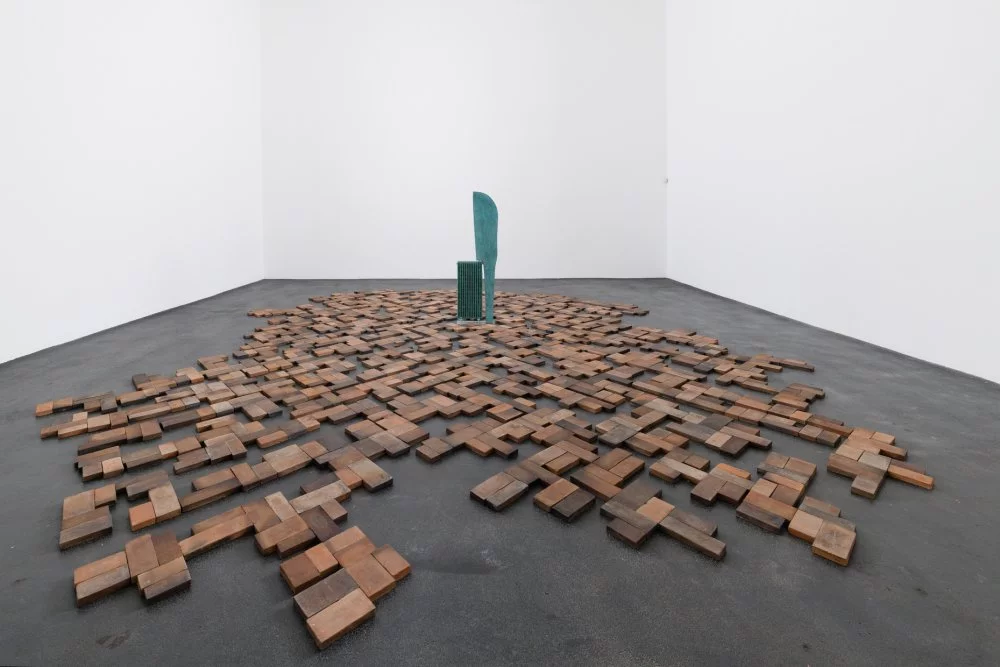
Plein Sud: Silver immediately brings to mind a color, but also a metal. Why did you title the exhibition and the black and white S8 film you shot in Sète in this way?
Katinka Bock: Language is a material and a form that can be sculpted like a material. Every language has its nuances: "Silver" is not "silber" (German), nor "argenté" (French). I like polysemous, layered words that seep under the skin, that give a temperature. Silver is the silvery reflection of the sun on the sea, silver photography, light in the grays of film, the metallic gray of industrial architecture, Sol Lewitt's graphite wall drawings, or the name of a pirate in Stevenson's Treasure Island. Character, material, technique, light and color are the ingredients of this exhibition.
PS: This exhibition is said to have something to do with water. Why this reference and how did you work this element into the exhibition?
KB: Water has been my partner and obsession for years. Unlike many of my other exhibitions, I don't bring water directly into the rooms of the Crac. As water is very present in the town of Sète, there was no reason to literally double its presence, but the sea and canals were the film's shooting sites. I'm particularly interested in the edges, where friction, conflict and even caresses take place.
PS: What's more, many of your pieces have previously been exposed to the elements in cities... on the terrace of the Centre Pompidou in Paris, on the roof of the Kunsthalle Bielefeld or in the Bielefeld river. Another connection to water?
KB: It's a question of crossing the edge of a protected space and confronting the outside, the public space. It's a kind of temporary abandonment, uncontrolled but accompanied. The patina on bronzes, fabrics and brass bears witness to this passage. Water is both vital and destructive. I'm also showing my first film, Couler un tas de pierre, which tells the story of the disappearance of a boat at the bottom of a river. The balance of "Fermata (lemon)" is based on the daily evaporation of lemons, and reads like a clock. The shapes of other pieces recall a marine vocabulary: boats, masts, the compass.
PS: In your creative process, is it drawing or working with materials that leads you to the desired form?
KB: In the beginning, I have an idea, a fixation on a shape. I often draw or note it directly in the material. Then the material guides me through its own qualities and whims.
PS: The positioning of the eye and the body in space always seem to be extremely well mastered. Is this relationship between the work and the space the starting point or goal of your creations?
KB : No piece is "site-specific", they are all autonomous, but I weave the links between them and the context or space to give each exhibition a very specific meaning. Sometimes I take the liberty of turning a work upside down, putting down what was standing upright, making one of two works or the other way around. It's important to be in the present of a new encounter, otherwise the exhibition tells nothing, it's bland.
PS: Tell me about the search for fluidity and balance, between the pieces and the public, and between the works themselves, that goes on in your installations...
KB: The exhibition opens with a sculpture entitled "Fermata", meaning "stop" or climax in music. This is a moment of free interpretation, where the musician is invited to hold a note for an indeterminate length of time, or to play in silence. It's this fluidity that I'm looking for. A freedom, a vague certainty that the dialogue continues, but without a defined path.
PS: Don't you think of your exhibitions in terms of routes and circulation, of wandering?
KB: I have no control over the itinerary, the public is free, there's no beginning or end, and no morals either. I try to be attentive to the perspectives and depths of the rooms, to find the right distance between very far away and intimately close. Le Crac has 7 m high ceilings in all the ground-floor rooms, which is extraordinary. Our gaze is very limited in horizontal strata; we can't fly like a bird. Something is experienced as high or low in relation to our bodily norm. So if I hang the wooden sculpture "Valentine" 30 cm off the ground, it opts for an animal perspective of a dog, for example, and we seem to dominate it with our gaze. Electric sister", on the other hand, is balanced on a column, looking down on us. Fears fly over our heads, thoughts chasing us.
PS: Despite the extreme softness and sensuality your sculptures exude, their titles are sometimes very harsh: "Toxic Fountain", "Amnesia"... Is this a paradox, and is this degree of humanity you infuse into your art important?
KB: Life isn't binary, and neither is art. How to live together is a question that constantly guides me.





Silver, Katinka Bock. Crac Occitanie, Sète → 07.01.24